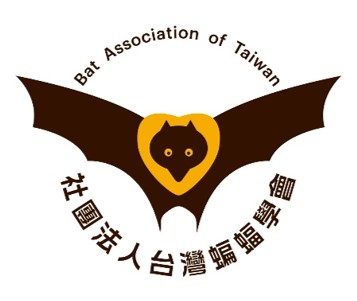蝙蝠研究
2019_臺灣蝙蝠冠狀病毒的調查及序列分析_陳小飛
出版年份:2019
研究生:陳小飛
分類:碩士論文
題目:臺灣蝙蝠冠狀病毒的調查及序列分析
Title:Detection of bat coronavirus in the bat population of Taiwan
摘要:
已知蝙蝠是幾種病毒的天然宿主,例如埃博拉病毒(EBOV),嚴重急性呼吸綜合症冠狀病毒(SARS-CoV)和中東呼吸綜合徵冠狀病毒(MERS-CoV)。我們從2013 - 2018年收集了總共872個蝙蝠糞便樣本,其中包括24種蝙蝠物種,並確定了性別,年齡和繁殖狀況,以供進一步分析。本研究中台灣CoV的總患病率為20%,共有177個陽性樣本。 Scotophilus kuhlii,Miniopterus fuliginosus和Rhinolophus monoceros的樣本量最大,CoV流行率分別為43%(76/178),22%(27/123)和17%(43/247)。成年蝙蝠,亞成體蝙蝠,雄性蝙蝠和雌性蝙蝠的冠狀病毒流行率分別為26%(131/499),26%(35/135),21%(79/373)和21%(91/428) 。年齡,性別和女性生育狀況不影響所有蝙蝠物種的CoV流行率。然而,交配雄性蝙蝠(34%,19/56)的CoV流行率顯著高於準備交配的雄性蝙蝠(17%,10/60)和非交配雄性蝙蝠(21%,5/39)。在本研究中,從Eptesicus serotinus horikawai中分離出Betacoronavirus c(E5-4和E10-1與中國蝙蝠中檢測到的MERS相關CoV具有高核苷酸同一性。我們的Betacoronavirus c菌株(E5-4和E10-1)之間的核苷酸同一性並且BatCoV-NL140422-China-2014分離株為97.9%,所有三株分離株在系統發育樹中聚集在一起。在S. kuhlii,M.fuliginosus和R. monoceros中檢測到的α冠狀病毒序列均高度相似。 Scotophilus bat CoV-512。經過6年的監測,我們在台灣蝙蝠種群中觀察到了α和β病毒的地方性流行,這些信息可以作為參考,為未來的冠狀病毒爆發做準備。
Abstract:
Bats are known to be the natural reservoir of several viruses, such as Ebola virus (EBOV), severe acute respiratory syndrome coronavirus (SARS-CoV), and Middle East respiratory syndrome coronavirus (MERS-CoV). We collected a total of 872 bat fecal samples of 24 bats species from 2013-2018 and identified the gender, age, and reproductive status for further analysis. The total prevalence of CoV in Taiwan in this study was 20% with a total of 177 positive samples. Scotophilus kuhlii, Miniopterus fuliginosus, and Rhinolophus monoceros had the largest sample size and high CoV prevalence of 43% (76/178), 22% (27/123), and 17% (43/247), respectively. The CoV prevalence of adult bats, subadult bats, male bats, and female bats were 26% (131/499), 26% (35/135), 21% (79/373) and 21% (91/428), respectively. Age, gender, and female reproductive status did not influence the CoV prevalence of all bat species. However, the mating male bats (34%, 19/56) had significant higher CoV prevalence than male bats prepare-to-mate (17%, 10/60) and non-mating male bats (21%, 5/39). Betacoronavirus c isolated from Eptesicus serotinus horikawai in this study (E5-4 and E10-1 had high nucleotide identity with MERS-related CoV detected in the bats in China. The nucleotide identity between our Betacoronavirus c isolates (E5-4 and E10-1) and BatCoV-NL140422-China-2014 isolate was 97.9% and all three isolates were clustered together in the phylogenetic tree. Sequences of the alphacoronavirus detected in S. kuhlii, M. fuliginosus, and R. monoceros were all highly similar to those of Scotophilus bat CoV-512. After 6 years of surveillance, we observed the endemic circulation of alpha- and betacoronavirus in the bat population of Taiwan and the information can be used as references to prepare for a future outbreak of CoV.
